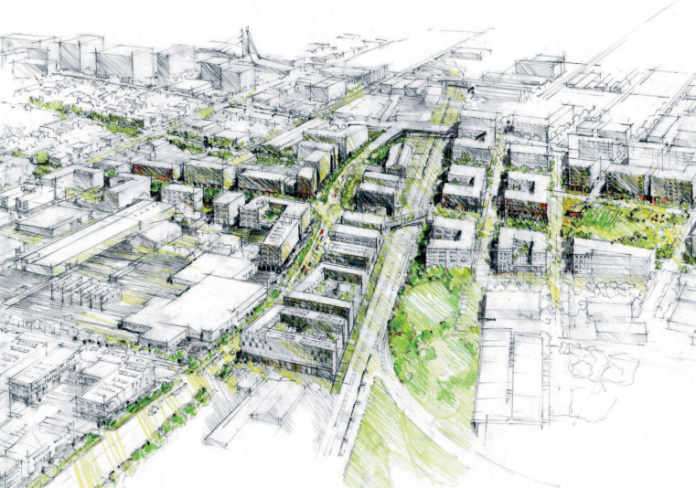Everett has released draft recommendations on zoning and building height regulations and parking strategies for its city center planning process “Metro Everett.” The draft proposal contains concepts that would completely reform the approach to how development is regulated in Metro Everett.
One of the key proposed changes involves consolidating the many city center zones into three general zoning categories. Specific development regulations would be layered on the three broad zoning categories by requiring compatibility measures for less intensive zones, such as stepping down heights in proximity to zones like single-family residential, and prescriptive design requirements by zone and building typology. Additionally, the general zoning categories would have a height suffix that would act the primary control on density and scale.
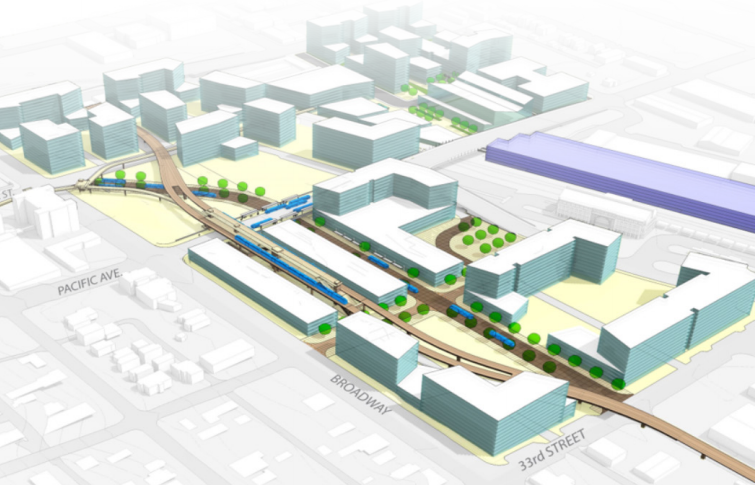
To put the proposal in context, Everett is expected to grow by 60,000 residents over the next 20 years. Somewhere between 8,000 and 13,000 new residents are anticipated to move into the city center by 2035, nearly doubling the population in Metro Everett. Over the same time period, jobs are expected to jump in tandem with housing and population growth putting pressure on development capacity. Transit service in Metro Everett will also greatly improve with changes to bus service by Everett Transit and Community Transit as well as the introduction of light rail service to the city center by 2036.
Proposed Zoning Categories
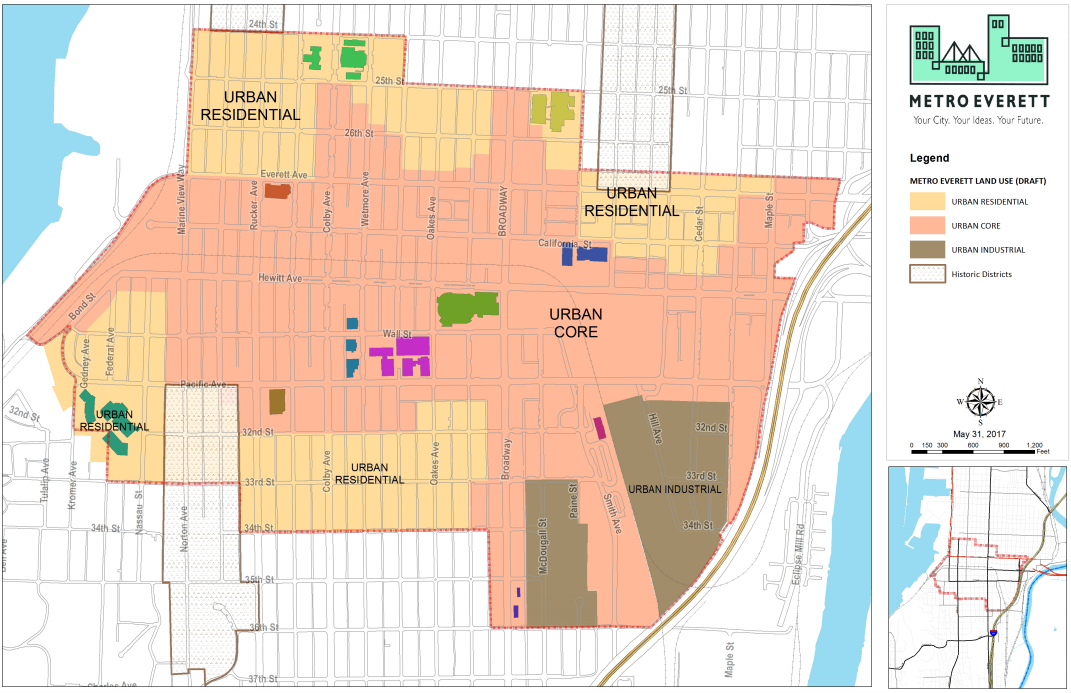
The three general zoning categories proposed are Urban Residential, Urban Core, and Urban Industrial.
- The Urban Residential zone would take in areas currently zoned as R-3, R-4, and R-5 that generally encircle the city center and provide transitional zoning to single-family residential areas beyond them. The zones allow varieties of low-rise multi-family residential uses as well as single-family residential and limited office and institutional uses. The new Urban Residential zone would allow medium- and high-density residential development with limited commercial as part of mixed-used development.
- The Urban Core zone would be focused toward the center of Metro Everett and allow mid-rise and high-rise mixed-used development. In general, there would be no maximum height limit. The zone would consolidate a variety of existing zones, including the Central Business District (B-3), Community Business (B-2), Broadway Mixed Use (BMU), General Commercial (C-1), Heavy Commercial (C-2), Everett Station (C-2ES), and select multi-family residential zones.
- The Urban Industrial zones would be limited to areas east of Broadway, south of Pacific Avenue, and west of I-5. Traditionally, the areas recommended for Urban Industrial zoning have had a mix of craft industrial, storage, and manufacturing uses. The recommended zoning would continue to allow these activities with ability to diversify as mixed-use.
Urban Residential
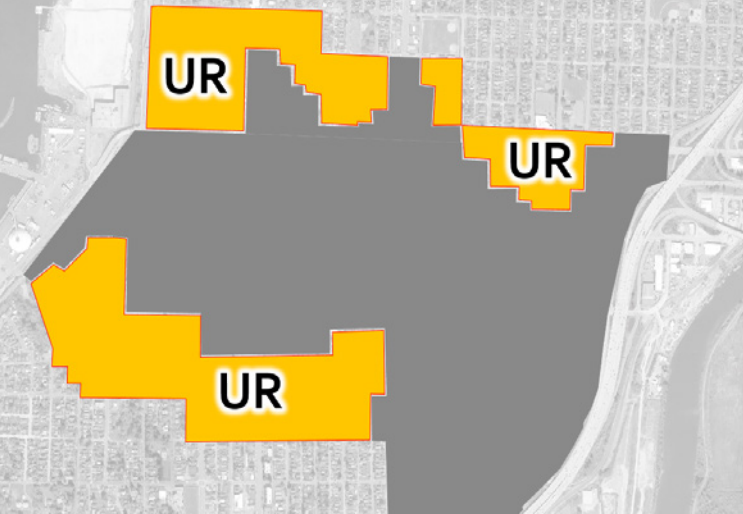
Approximately a third of Metro Everett is recommended to be zoned Urban Residential, which would act as a transitional zoning type to single-family residential areas. Residential uses are intended to be the predominate development pattern throughout the zone, though there would be limited allowances for non-residential uses such as offices and medical clinics when incorporated into a mixed-use building. While there is no proposed density limit on the number of units that would be allowed, other development regulations would act as de facto density limiters, such as parking requirements, setbacks, maximum building heights, and landscaping requirements.
- Building heights. Maximum building heights would range across the zone from three to 11 stories according to geographical location (see Building Heights, Density, Incentives, and Other Development Regulations section below).
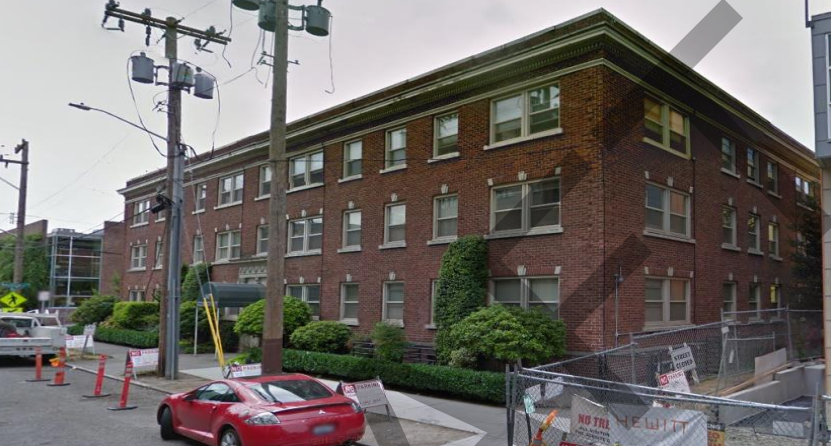
- Allowed uses. Multi-family and single-family residential would be the predominate uses throughout the zone, though some mixing of uses would be allowed on arterials and streets that have a Mixed-Use designation. Specific residential housing types that would be encouraged are townhouses, small and large multiplexes, and stacked apartments and condominium whether standalone or part of mixed-use development. Non-residential uses, such as neighborhood services, light commercial, office, and medical clinics, would be allowed on the ground floor a mixed-use structure. Other uses already operating in the zone would be grandfathered in as non-conforming uses and could qualify for limited expansions under special provisions. New single-family detached housing, however, would be prohibited in the zone.
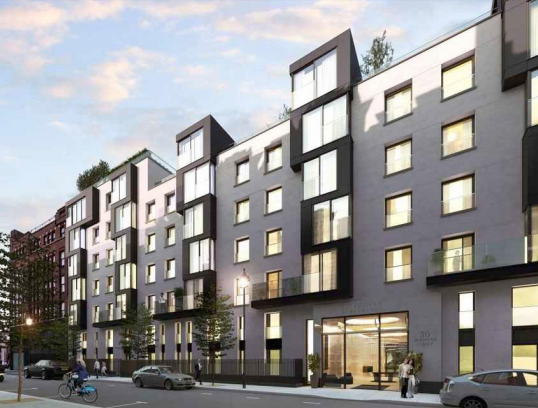
- Historic preservation. The Urban Residential zone would have two areas where historic districts fall within it. Specifically, the Norton Grand Historic District (situated on Norton Avenue and Grand Avenue south of Pacific Avenue) and Riverside Historic District (situated on Virginia Avenue and Baker Avenue north of Everett Avenue) would be within Urban Residential zones. The proposal recommends using similar building height maximums for these areas to ensure that the scale of new development is compatible with local historic characteristics. The proposal also recommends that the historic districts and their corresponding overlays be retained as part of any zoning changes. This would mean that historic district overlay design guidelines and development standards would apply, and whenever there is a conflict in development regulations that the historic district overlay regulations would prevail.
- Development standards. The Urban Residential zone would be packaged with a variety of development standards, such as maximum lot coverage and building massing, setbacks, landscaping, maximum parking, and architectural standards.

Urban Core
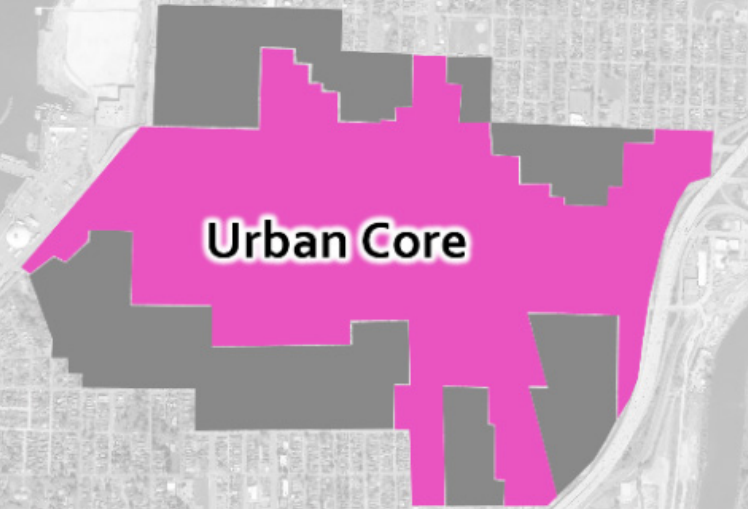
The Urban Core zone is proposed to encompass more than half of the Metro Everett area. It is intended to serve as the densest and most diverse set of uses with a particular emphasis on commercial and cultural activities. Importantly, it would provide significant capacity for future residential and employment growth expected in Everett’s city center. The Urban Core zone will also feature a future Link light rail station as part of the Sound Transit 3 expansion program, which will provide a necessary transportation backbone for the district.
- Building heights. Currently, a select number of properties near Colby Avenue have unlimited building heights. The proposal would expand unlimited building heights in the Urban Core zone to include areas between Grand Avenue and Broadway and from Everett Avenue to Pacific Avenue. Unlimited building heights would also be applied to the Lowe’s Home Improvement east of the railway tracks. However, building heights would otherwise be limited to 11 stories or fewer depending upon geographic location and stepping down in height to transition toward less intensive areas (see Building Heights, Density, Incentives, and Other Development Regulations section below).
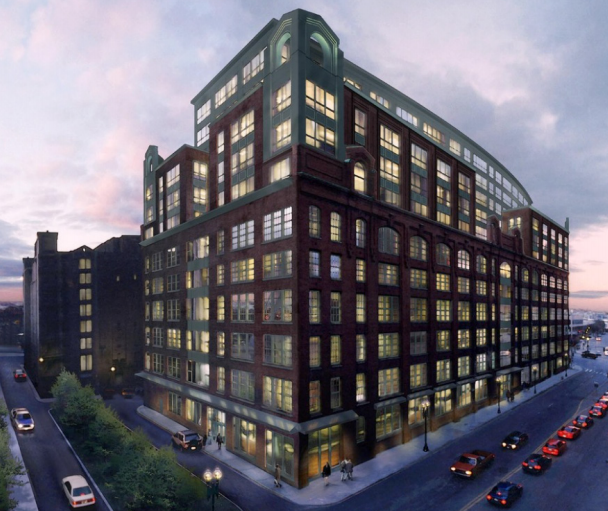
- Allowed uses. The Urban Core would allow a mix of uses throughout the zone. Developments would tend toward mid-rise and high-rise, which could standalone as residential or non-residential, or contain mix of residential and commercial uses. The kinds of buildings that are envisioned in the zone include townhouses, large multiplexes, stacked residential unit buildings, commercial block buildings, mid-rise buildings, and high-rise buildings.

- Development standards. Specific urban design development standards would apply in the Urban Core zone based upon a parallel streetscape plan. The idea is to apply specific public realm requirements for building facades, ground floor uses, and frontage improvements. Development standards would also regulate the location of building placement on a site, parking location, and minimum square footage and building heights.
Urban Industrial
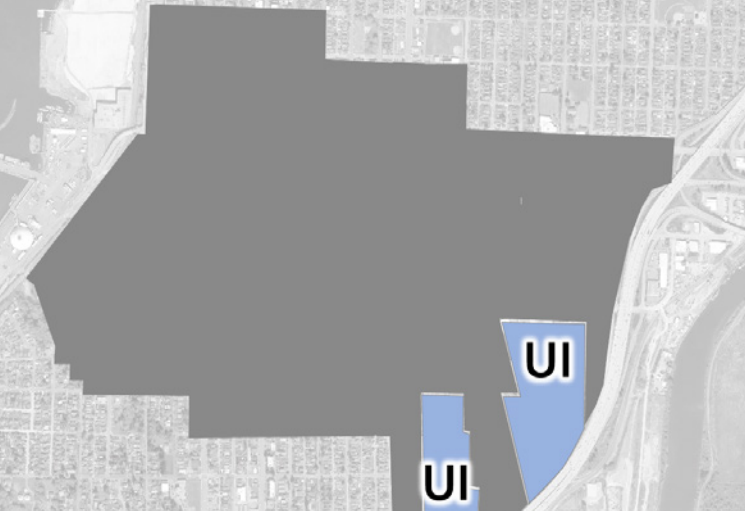
The Urban Industrial zone is proposed to cover two small pockets of land in the southeast area of Metro Everett. The goal of the zone is to provide for continued local industrial activities as well as accommodate some commercial, residential, and other uses. The Urban Industrial zone would also provide a partial buffer to I-5 and daylighted sections of the railway line.
- Building heights. Generally, the Urban Industrial zone would allow mid-rise heights up to seven and 11 stories. This would allow building heights to transition and step down from the higher building heights allowed in the Urban Core zone (see Building Heights, Density, Incentives, and Other Development Regulations section below). Minimum building heights would be as low as one story to permit continued operations and future expansion of existing industrial users in the zone.
- Allowed uses. The Urban Industrial zone is focused on providing opportunities for noisier and active types of uses such as light industrial, manufacturing, and service repair. The zone would also allow residential uses considered compatible with these types of uses and office uses. The kinds of buildings that would be allowed in the zone include townhouses, large multiplexes, stacked residential units, commercial block buildings, and flex buildings.
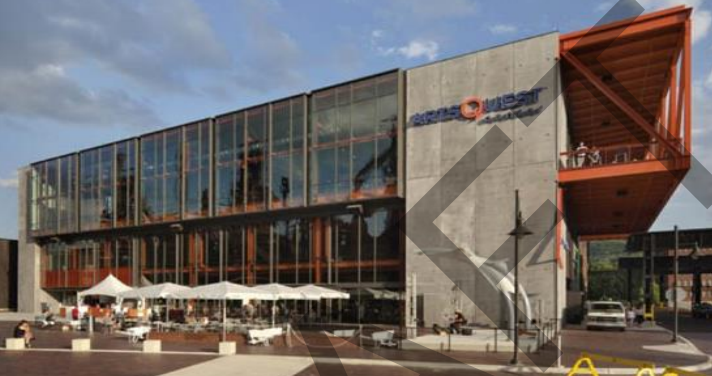
- Development standards. Like the other two zones, specific development standards would apply commonly throughout the zone to enhance the overall quality and feel of the area.
Building Heights, Density, Incentives, and Other Development Regulations
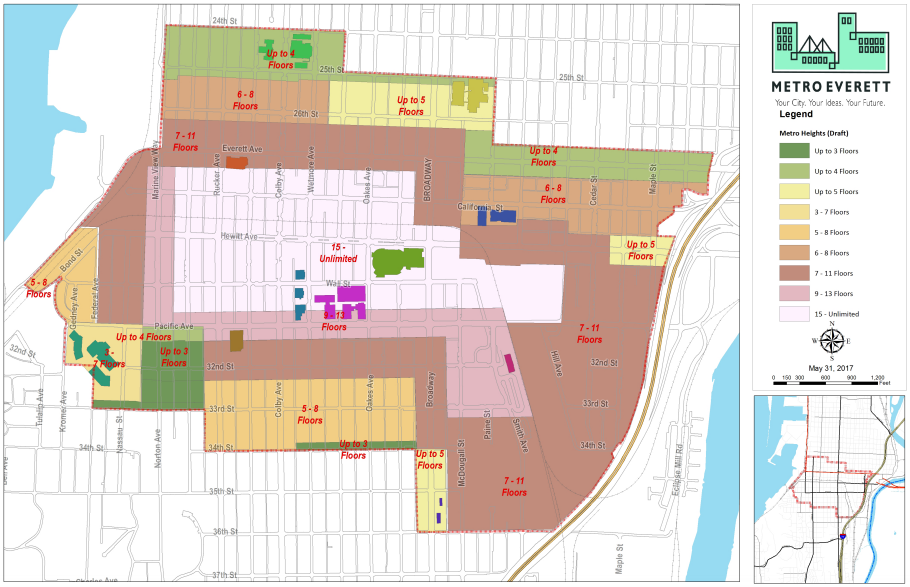
Maximum building heights within Metro Everett are proposed to range from three stories to unlimited using a tiered approach. The tiered approach, similar to a wedding cake, is intended transition downward in height from the center to better meld into the one- to three-story character of single-family residential areas surrounding the district. Transitions in maximum heights generally occur mid-block or at alleys to help soften jumps in building heights. Maximum building heights would be broken into two categories: a base maximum and an incentive maximum.
As the map above notes, the core area ranges from 15 stories to unlimited stories (noted as “15 – Unlimited” in the map). In that case, 15 stories is considered to be the base maximum height allowed outright–and subject to other design standards that may affect height, bulk, and scale. The unlimited maximum height is possible if a developer elects to use various incentive options to unlock the additional building height and floor area beyond the base maximum height otherwise allowed.
Bulk regulations, such as upper-floor stepbacks and floorplate maximums (as noted in the table and depicted in the diagram below), are proposed to be used as a way to ensure that solar light filters down to the ground and reduce impacts to views that can come with large, bulky buildings. Modulation would be required for buildings that are greater than 200 feet in width. Required setbacks and building location would also apply based upon the streetscape type, zone, and building type. In certain cases, lot coverage maximums may be used as a means to control development density on sites.
Floorplate maximums would differ by height. For instance, between the first and fourth floors, there would be no maximum floorplate meaning that a building could occupy the entirety of the lot area below it. From the fifth through eighth floors, the floor area of each floor could only occupy 85% of the equivalent lot area meaning that some space would go unused by those portions of a structure. Floors beyond these levels would increasingly be restricted in the kind of floorplate that could be achieved and in no case could a structure have a floorplate great than 10,000 square feet for the floors above the fourth story if the building is a high-rise (i.e., taller than 15 stories).
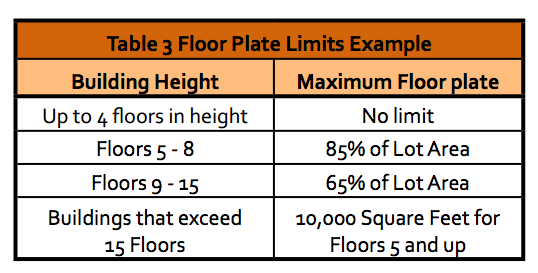
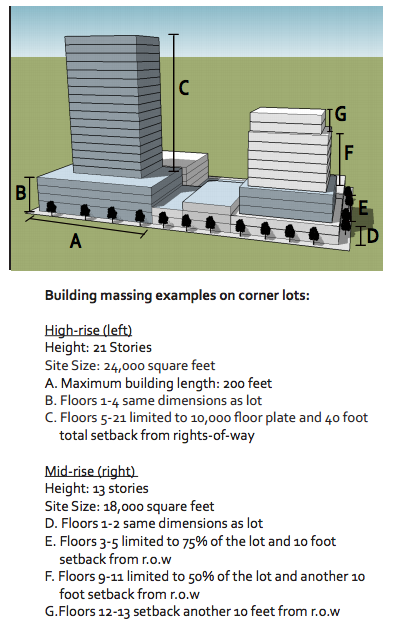
The proposal would also require that new development in the Urban Residential and Urban Core zones achieve a minimum amount of building height and floor area. In both cases, a minimum building height of two stories would be required to guard against under-building and help deliver better overall urban design through development patterns.
In term of building height and floor area incentives, developers would be able to unlock extra space over the base maximum using a mix of public benefits. Options that could qualify include public benefits, such as: affordable housing, historic preservation, public art, and public space. In some cases, a developer could make a fee in lieu payment instead of formally developing a public benefit on-site or off-site. The incentive options would differ for residential and non-residential development, as noted in the tables below. Importantly, the extra floor area would directly relate to the amount of floor area dedicated to public benefits.
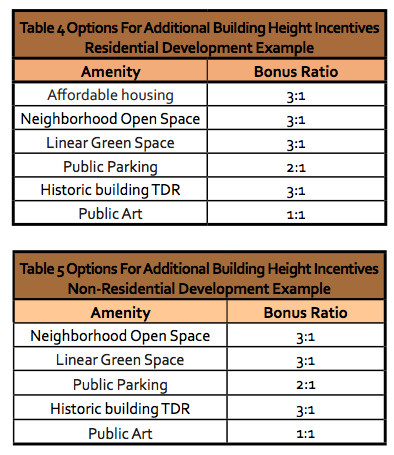
Using the incentive options for extra space, a development would need to be certified under LEED (a very green environmental building rating system) or a similar rating system and develop a Transportation Demand Management plan to provide multi-modal transportation choices as part of the project.
The proposal would also establish a transfer of development rights (TDR) program that could be used to protect historic buildings, upgrade vulnerable masonry buildings, and develop open space. Properties that participate in the TDR program could then sell TDRs to developers who may want to use the TDRs to gain additional floor area and building height as part of developments within the Metro Everett area.
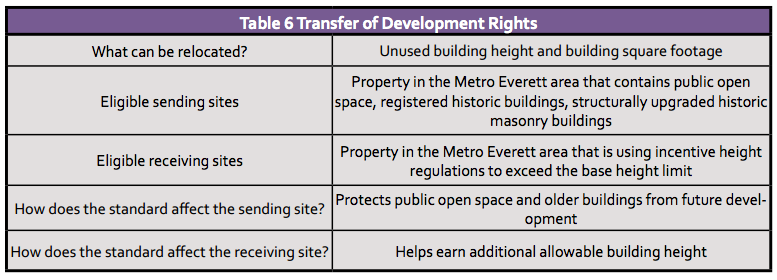
Finally, other more prescriptive development regulations associated with each zone and building type would apply to ensure that things like commercial ground floors have adequate building height, a building is located on a minimum lot size so that it can be effectively constructed, and that parking is located in an appropriate location for access (see Appendices A1 and A2 in the PDF below).
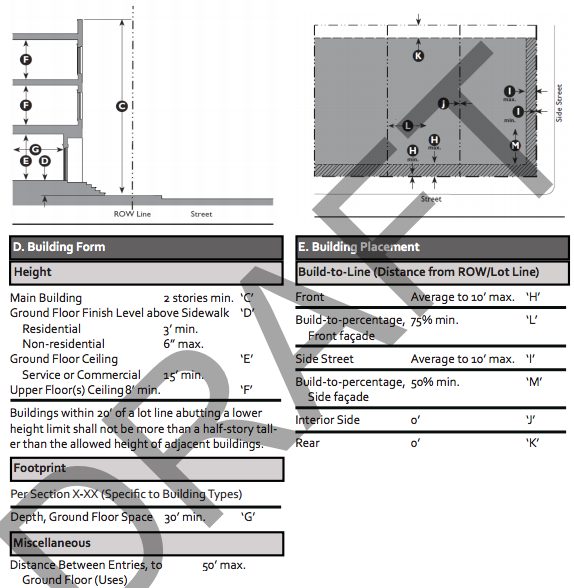
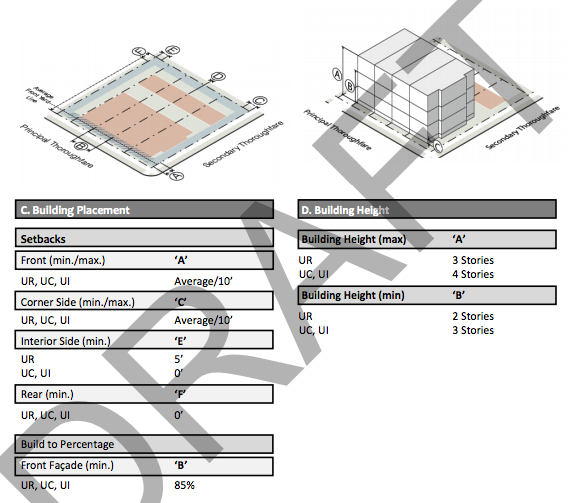
The development regulations are designed to function similar to form-based codes by focusing on how development should be designed instead of strictly controlled by use.
Parking Strategies
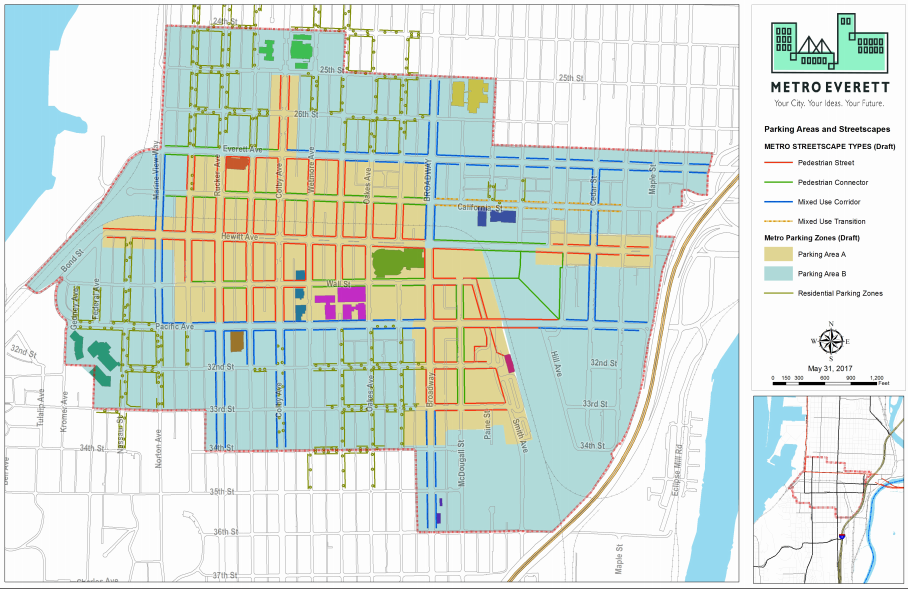
Lastly, the recommendations include a variety of proposals that could address parking. These include:
- Eliminating some parking requirements. Parking requirements could be entirely eliminated for non-residential development. This would apply to all streets designated for pedestrians.
- Applying parking requirements geographically. Other parking requirements could be tailored to their street designation with pedestrian streets having the lowest requirements.
- Applying parking requirements by housing size. Parking requirements could be based upon the number of bedrooms contained in a dwelling unit.
- Applying parking requirements by resident characteristics. Parking requirements could differ based upon intended resident occupancy. Low-income, senior, and student housing could have the lowest parking requirements.
- Applying parking requirements by access to transit. Parking requirements could be lower if located near frequent transit service.
- Applying parking requirements by development characteristics. Parking requirements could differ based upon development characteristics, such as whether a development makes adaptive reuse of a historic structure or is mixed-use and/or transit-oriented in design.
The proposal also suggests that on-street permit parking could be expanded, additional changes could be made to on-street parking policies in certain areas of Metro Everett, and parking related to the future light rail station should be structured away from the station.
- On-street permit parking changes. Everett already has residential permit parking zones in place, but the program could be modified by expanding the zones to elsewhere and changing how it works. For instance, permits could be limited to one per dwelling unit or eligibility to participate in the program could be limited if a building has fewer than one parking space per unit. Fees for parking permits could also be increased and time limits for those without permits adjusted.
- Other on-street parking changes. Everett has a mixture of time limited on-street parking. Some of these come in the form of permit parking spaces with 90-minute maximum others with two-hour or more parking limits. Changes to on-street parking could be made to better manage demand, such as adding paid parking, extend the time of day that parking limits apply, or reducing maximum parking time limits. In terms of Metro Everett, a special emphasis on changing and expanding on-street parking restrictions is likely to be focused around Everett Station and the XFINITY Arena Event Center.
- Parking policy for future light rail. Parking at Everett Station is entirely surface parking, which is certainly not the best use of land to instill a local transit-oriented culture around the station. Everett is looking to change the paradigm by creating a pedestrian-oriented district around the existing transit center and future light rail station. One policy to help realize this is to limit where standalone parking structures for transit could be located. The proposal suggests that such a limitation should confine transit-related parking structures to areas south of Pacific Avenue and east of the railway, essentially meaning that such facilitates would be restricted to an area directly east of Everett Station.
Next Steps
The City of Everett plans to hold an open house on the draft plan for development regulations tonight (Tuesday, June 13th) from 6pm to 8.30pm at the Everett Performing Arts Center. The proposal is also open for general comment either through an online forum or contacting the project manager, Niels Tygesen.
Metro Everett – Zoning, Building Height, And Parking Recommendations
Stephen is a professional urban planner in Puget Sound with a passion for sustainable, livable, and diverse cities. He is especially interested in how policies, regulations, and programs can promote positive outcomes for communities. With stints in great cities like Bellingham and Cork, Stephen currently lives in Seattle. He primarily covers land use and transportation issues and has been with The Urbanist since 2014.

